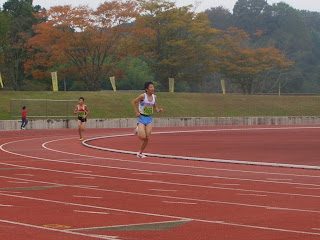Although
Christmas is not a holiday period in Japan, I took a few days off work this
week, partly so I could visit some of the 16 UNESCO World Heritage Buddhist temples
and shrines for which Kyoto City is famous for. As a result, my body is far
from being a temple this season. I
kicked off the holiday period on Saturday by going to Toji Temple. On the 21st
of each month the temple grounds play host to a flea market, and the huge
bustling crowds were less interested in the temple than they were in bargain
hunting. By contrast, it was rather quiet and peaceful around the main landmark
of Toji Temple, a five storied pagoda that, at 57 metres, is the tallest pagoda in
Japan.
On
Sunday I was invited to a Ramen food festival in the World Exposition 1970
Commemorative Park in Osaka. Ramen has a strong cult following, with guide
books listing and ranking the best Ramen shops in each prefecture. It was no
surprise to me therefore that thousands of people were prepared to queue for up
to an hour at a time in freezing conditions to sample Ramen from across Japan
at the festival. I made a mistake by hungrily devouring three bowls of
different types of Ramen, which was probably one bowl too many, thereby feeling
too unwell to make it out for a run when I eventually made it home.
Being
a normal workday, shops, restaurants, buses, trains and offices are all open as
usual on Christmas Day. Turkey is a real rarity in Japan, so much so that some
of my work colleagues have said that they have never eaten it, and asked me to
describe what it tastes like to them! I have a British friend, from my home
town Warrington, who has been living in Kyoto City for over a decade, who
invited me over for Christmas dinner on Monday 23rd. He chose this
date as his Japanese wife had to work on the 25th. Luckily, she had
been on a recent trip to the UK and had stocked up on festive delights such as
Christmas pudding, gravy granules, cranberry sauce and stuffing mixture – all of
which is almost impossible to get hold of in Japan. With great difficulty, they
had also managed to get hold of a Turkey. So I had a great time eating a
traditional Christmas dinner, washed down by a giant 3 litre bottle of red
wine.
Unsurprisingly,
things got off to a slow start on Christmas Eve, though I did manage to make it
to a 2pm tour of the old Imperial Palace in Kyoto. This served as the main
residence of Japan’s Emperor until 1868 when the Emperor and capital city of
Japan relocated to Edo, which was subsequently renamed Tokyo – itself an anagram
of Kyoto. After a stroll around the tranquil Imperial Gardens, I went to see
Kinkakuji, otherwise known as the Golden Pavilion. This is the most well-known
tourist attraction in Kyoto. I guessed, rightly as it turned out, that the
immense crowds which it is also known for were likely to be absent on a late
afternoon on a cold Christmas Eve. There is certainly something special and captivating
at the sight of the three storied gold leaf temple building reflected on the
shimmering pond that it stands on. Again, I took an unscheduled rest from
running.
Christmas
Day was spent at home. I read somewhere that tennis ace Andy Murray was not
going to see any friends and family over the Christmas holidays as he planned
to stick to his usual training. Such Zen like commitment over the festive
period is admirable. Nagging doubts crept into my mind that my running training
was not going according to plan due to the excesses of partying and visiting
temples. Therefore, I forced myself to make an attempt at a session by heading
out for 8 x 1K reps with short recovery internals, before spending the evening
sampling a selection of Kyoto Real Ales. In addition, I ate a Strawberry and
cream cake, which is traditionally eaten by Japanese people on Christmas Day.
Feeling
refreshed, I went to Ryoanji Temple earlier today, site of Japan’s most famous
rock garden. The garden consists of 15 rocks laid out on a rectangular plot,
surrounded by a sea of white pebbles. There is a special viewing platform where
you can sit and study the rocks. The meaning of the garden is unclear, though there
are different theories as to what the rocks are meant to represent. It is said
that from any vantage point at least one of the rocks is always hidden from the
viewer. I overheard one American tourist loudly proclaiming, with a note of
disappointment in his voice, that it wasn’t true that you couldn’t see all 15
rocks. He was certainly correct that, if you stood up on the viewing deck and
looked at the garden from as far back as you could physically stand, it was possible
to just about see all 15 rocks. Perhaps, therein is the meaning of the garden: that
only by occasionally stepping back can you see the bigger picture.
Talking
of which, when I made it home I reflected upon the fact that I really should
try to be more consistent with my training. Consistency is the key to
improvement, though a few days of taking it easy in order to enjoy living in
the moment does more good than harm.




























